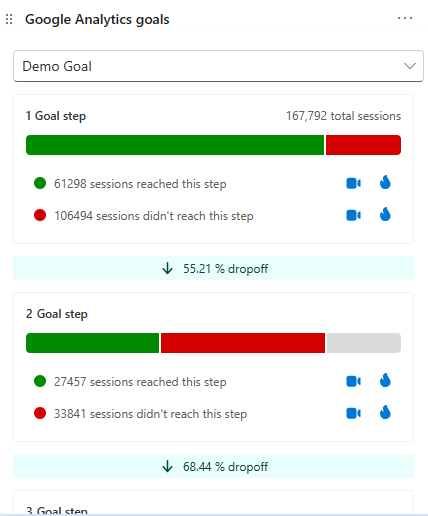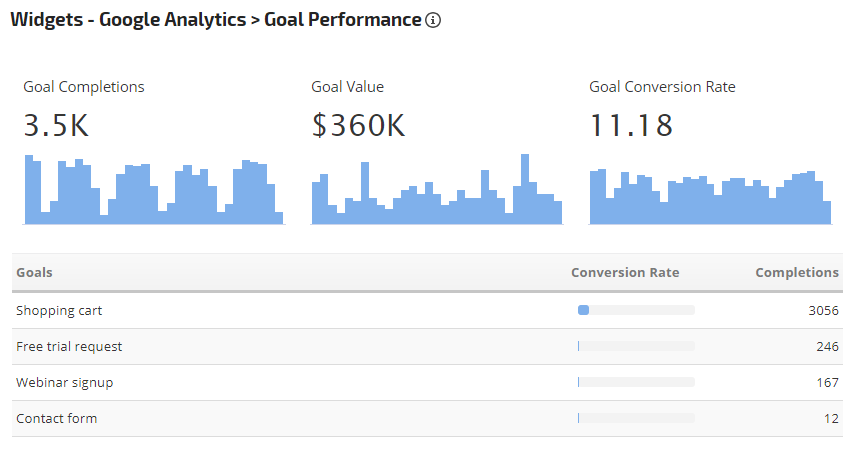Discover the Limitations of Google Analytics Goals: Revealing the Information Kind That Remain Untrackable
As services significantly rely on data-driven decision-making, comprehending the constraints of tools like Google Analytics ends up being vital. While Google Analytics Goals deal valuable insights right into customer interactions, there exist data types that avoid monitoring, posing challenges to a detailed understanding of user habits.
Insufficient User Trip Tracking
Incomplete individual journey monitoring within Google Analytics can hinder the ability to accurately evaluate customer behavior. When the user journey is not fully tracked, there are voids in the information that protect against an extensive understanding of exactly how individuals communicate with a web site. This absence of understanding can bring about missed out on opportunities for optimization and renovations to the customer experience.
One usual concern with incomplete user trip monitoring is the failure to see the full path that users take in the past finishing a goal or leaving the site. Without this details, it is testing to determine where users may be experiencing challenges or friction points that prevent them from converting. Additionally, incomplete tracking can obscure the impact of particular marketing initiatives or web site modifications on individual behavior.
To resolve this constraint, it is essential to establish up proper tracking mechanisms within Google Analytics to record the whole individual journey. This may involve establishing event monitoring, objective funnels, or utilizing devices like Google Tag Manager to guarantee that no important communications go unrecorded. By acquiring an extensive view of the user journey, website proprietors can make more enlightened decisions to enhance customer engagement and drive conversions.
Acknowledgment Challenges
Navigating with acknowledgment difficulties in Google Analytics calls for a detailed understanding of just how different touchpoints contribute to the general conversion procedure. Acknowledgment obstacles occur from the complexity of contemporary consumer journeys, where individuals engage with multiple channels before converting.
One usual attribution challenge is the trouble in associating conversions to the correct resource, especially in instances where individuals communicate with several channels before transforming. In addition, cross-device monitoring postures another attribution obstacle, as users usually change between tools throughout their trip, making it testing to track their interactions effortlessly.
Offline Conversions
Offered the difficulties associated with associating conversions precisely in online networks, the dimension of offline conversions provides a significant possibility for marketing professionals seeking a more comprehensive understanding of their clients' trip. Offline conversions describe activities that customers take in the real world, such as making purchases in brick-and-mortar stores or over the phone, participating in events, or involving with printed products - what data is google analytics goals unable to track. These conversions are vital for businesses that operate both online and offline, as they give important understandings right into the effectiveness of advertising projects throughout different touchpoints
Tracking offline conversions commonly posed a considerable obstacle for marketers, as it visit our website was challenging to link these actions back to certain on-line communications properly. However, with advancements in innovation, such as the combination of CRM systems, special identifiers, and promo code codes, organizations can currently bridge the gap between online and offline data to gain a much more alternative view of client actions. By efficiently determining offline conversions, marketing experts can maximize their approaches, allocate resources much more efficiently, and ultimately boost the total client experience.
Cross-Device Tracking
Cross-device monitoring plays a critical function in understanding the interconnected nature of consumers' digital communications throughout several tools. In today's omnichannel world, where users seamlessly change between smart devices, tablets, and desktop computers, tracking their behavior across these tools is crucial for marketers to obtain an extensive sight of their consumer journey.

Moreover, privacy issues and guidelines such as GDPR and CCPA have better complicated cross-device tracking. With users requiring even more control over their information and raised constraints on monitoring modern technologies, online marketers should discover ingenious and privacy-compliant methods to attach customer communications throughout tools.
Dynamic Content Engagement
Recognizing user involvement with vibrant content is essential in maximizing electronic advertising and marketing approaches for boosted target market interaction. Dynamic content describes internet site components that alter based upon individual habits, preferences, or various other aspects, providing a customized experience. However, tracking customer communications with dynamic web content websites presents difficulties for traditional analytics devices like Google Analytics.
While Google Analytics can track basic communications like clicks and page views, it might have a hard time to capture even more nuanced involvements within dynamic material. what data is google analytics goals unable to track. Metrics such as time invested in certain dynamic components, float activities, or communications within pop-ups are frequently not easily measurable using common monitoring techniques. This limitation prevents marketers' capacity to completely realize exactly how customers are engaging with vibrant content and tailor their methods accordingly

Final Thought
In verdict, Google Analytics objectives have limitations in tracking incomplete user journeys, attributing conversions accurately, catching offline conversions, tracking cross-device interactions, and determining vibrant web content engagement. These restrictions highlight the relevance of discovering additional monitoring methods and tools to gain an extra comprehensive understanding of individual actions and conversions beyond what Google Analytics can supply.
While Google Analytics Goals deal beneficial insights into individual communications, there exist information kinds that avoid tracking, posing challenges to a detailed understanding of individual behavior.Insufficient customer journey tracking within Google Analytics can hinder the capacity to properly examine individual habits. When the user trip is not completely tracked, there are spaces in the information that stop a thorough understanding of exactly how individuals communicate with a site.One typical issue with incomplete customer journey tracking is the inability to see the complete course that individuals take previously completing a goal or leaving the site. By acquiring an extensive view of the user journey, internet site proprietors can make even more enlightened choices to boost individual involvement and drive conversions.